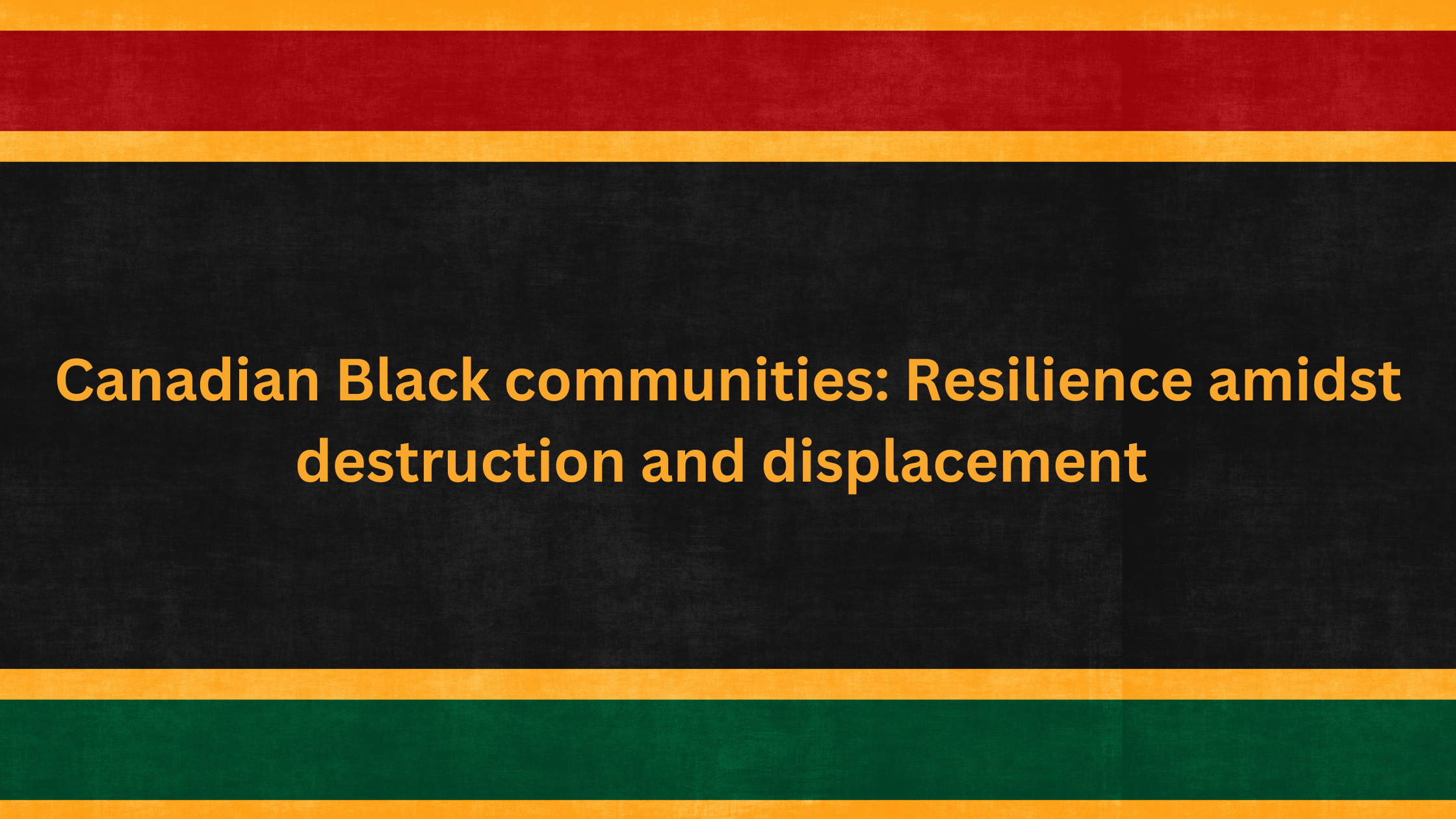As we celebrate Black Heritage Month, we are inspired by the indomitable spirit of Black Canadians. This month is a reminder of Black Canadians’ determination, courage and triumph over adversity, serving as a beacon of hope.
According to the African American Registry (AAREG), in the early 1600s, Mathieu Da Costa, an African navigator, joined French explorers and marked the beginning of Black Canadians’ contributions to this nation. While slavery was not as widely prevalent in Canada as it was in the United States, many Black Canadians found refuge through the Underground Railroad. Some arrived as Loyalists during the American Revolution or as immigrants in search of better opportunities. Their presence has dramatically enriched Canada’s diverse cultural and social fabric.
Black Canada’s liberation, however, did not guarantee freedom from racial discrimination. Black Canadians still continue to face challenges such as segregation, economic disparities and limited access to housing and employment, similar to the struggles experienced by African Americans in the United States. Despite these systematic obstacles, Black Canadians have demonstrated remarkable perseverance throughout history. They have worked tirelessly to establish thriving communities with their own institutions, including banks, schools and places of worship. Unfortunately, these symbols of hope have often been targeted for destruction.
Displacement under the guise of redevelopment
Black Canadian communities consistently endured displacement under the guise of redevelopment. This guise is known as forcefully replacing buildings and communities in order to conceal systematic harmful truths that have been done to these communities. Multiple factors that lead to redevelopments include changes in government policies, urban planning initiatives, economic interests and racial discrimination, which significantly influence these initiatives. Local authorities and influential groups frequently played a central role in dismantling established and thriving Black communities in favour of transportation and service infrastructure projects, urban renewal ventures, or gentrification (The concept known as forcefully pushing impoverished communities out to make room for wealthier populations). Moreover, discriminatory practices in housing and employment further marginalized these communities, ultimately resulting in their displacement and in most cases, erasing them entirely.
Africville: Token historic memorial of a once-thriving Black community
According to the Canadian Encyclopedia, in the late 1700s and early 1800s – after the American Revolution and the War of 1812 – large groups of Black settlers began to arrive in the province of Nova Scotia. Many of them were formerly enslaved people who had been promised freedom and land in Nova Scotia for their service. When they arrived, Black people encountered racism by white settlers who viewed them as inferior. Black settlers were pushed to the margins of society and forced to live on the most inhabitable land. Due to segregation, Black students were not allowed to attend school, only adding to the oppression Black settlers faced in Nova Scotia.
According to the Canadian Museum of Human Rights, Africville was a vibrant and self-sustaining Black community located in Halifax, Nova Scotia. It was built by Black families who wanted to create a thriving place to live, work and learn. In the 1960s, the city authorities demolished Africville, including their community’s Baptist church, to make space for a bridge and eventually an off-leash dog park. The decision forced the residents to fight for justice, which is an ongoing battle to this day. Sadly, Africville stands as a tragic example of the negative impact of urban renewal policies. Despite its rich culture and significance, the community was destroyed and its residents forcibly displaced.
Canada’s pattern of displacement of Black communities: Hogan’s Alley, Little Jamaica and Little Burgundy
Hogan’s Alley in British Columbia was a vibrant cultural centre for the Black community in Vancouver. It was renowned for its music scene and housed the city’s only Black church. Tragically, in the late 1960s, Hogan’s Alley was demolished to make way for the construction of the viaducts, also known as a busy roadway. This unjust displacement not only erased a significant Black cultural landmark but also served as a heartbreaking reminder of the systemic racial biases that existed during that time.
The infamous neighbourhood along Eglinton Avenue West, Toronto, known locally as ‘Little Jamaica,’ was erased for a light rail transit (LRT) project called the Eglinton Crosstown. Aayesha Patel, a professor at the University of Toronto who researched the impact of Eglinton Crosstown, says “This is one of many projects highlighting the gentrification process known as predicated on and reproduced by existing racial inequalities.” The rationale for the removal of an existing, thriving and cultural neighbourhood was that the components of the community did not fit with the modern and contemporary quality of the community that was to be rebuilt. Then, the entire neighbourhood was removed, with only a street sign to memorialize its once existence.
In Montreal, Little Burgundy served as the cultural and spiritual home for many Black Canadians, thriving as a jazz hub from the 1920s to the 1950s. Urban renewal and the construction of the Ville-Marie Expressway also fragmented this community, displacing residents and altering its cultural landscape.
Resilience in the face of exclusion and erasure
In Canada, Black communities have faced displacement and erasure because of urban renewal, highway construction and other development projects.
The history of Black Canadians is an integral part of Canadian history. This history showcases their unwavering resilience in the face of systemic racism and displacement. By recognizing and acknowledging the injustices experienced by Black Canadians in Africville, Hogan’s Alley, Little Jamaica and Little Burgundy, we gain valuable insights into the present challenges the Black community faces.
As we celebrate Black Heritage Month, we are inspired by the resilient spirit of Black Canadians. Their determination, courage, and triumph over adversity serve as a beacon of hope. Honouring their history is a way to pay homage to the countless individuals who fought to pave the way for a more inclusive and equitable future.
Understanding the roots of systemic racism and displacement is key to rectifying past injustices and working towards a future where every individual is valued and respected. Together, let us strive to create a world where the resilience and contributions of Black Canadians are celebrated and honoured year-round for future generations to come.
Written by: Elvenia Gray-Sandiford, Student Submission





